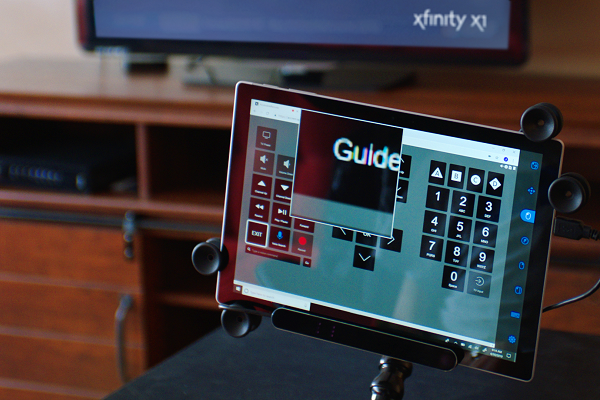Comcast Adaptive Remote Adds Customizable Voice Command Buttons
 Comcast has augmented the Xfinity Adaptive Remote to let users with impaired speech translate voice commands into customized buttons on the screen. The extra accessibility feature is reminiscent of voice AI tools like Siri Shortcuts and Android Action Blocks but tied to web-based Adaptive Remote that Comcast subscribers can use to control their televisions and compatible smart home devices. It’s also the first result of Comcast’s new partnership with the Team Gleason Foundation, a non-profit seeking to help improve the lives of people with ALS and other disabilities.
Comcast has augmented the Xfinity Adaptive Remote to let users with impaired speech translate voice commands into customized buttons on the screen. The extra accessibility feature is reminiscent of voice AI tools like Siri Shortcuts and Android Action Blocks but tied to web-based Adaptive Remote that Comcast subscribers can use to control their televisions and compatible smart home devices. It’s also the first result of Comcast’s new partnership with the Team Gleason Foundation, a non-profit seeking to help improve the lives of people with ALS and other disabilities.
Adaptive Remote Buttons
Comcast debuted the Adaptive Remote platform three years ago for people with disabilities to control their TVs and connected technology. The web-based platform is available via smartphones and tablets, as well as more specialized assistive devices controlled by voice, eye-tracking, switches, and other techniques. For those with limited vocal capacity, the Adaptive Remote can operate by typing out what would usually be a voice command. The new update streamlines that element by embedding those commands in custom buttons on the remote. A viewer could have a button on the screen that changes the channel or turns on a connected smart lightbulb instead of needing to say or type it every time.
“Our partnership with Comcast allows us to continue innovating on technology that provides people with ALS and other physical disabilities the latest in accessibility functions,” said Blair Casey, Team Gleason’s Chief Impact Officer. “We will expand awareness and usership of the Adaptive Remote, leveraging Team Gleason’s robust network of clinicians, technologists, and caregivers to give people with limited physical capabilities the ability to access Comcast’s suite of technology.”
Accessible AI
Former New Orleans Saints football player Steve Gleason established Team Gleason after his own ALS diagnosis. The organization repeatedly found that those with disabilities like ALS value independently controlling their TV and entertainment. The updated Adaptive Remote reflects those priorities as the first project for Team Gleason and Comcast.
Comcast’s renewed focus on accessibility using AI is part of the larger trend toward making tech more usable for those with disabilities. Google touts the Android Action Blocks feature, Voice Access service, Lookout reader, and Google Assistant shortcuts and regularly releases new accessibility features. The same goes for Amazon, with Alexa offering direct control by those with speech impairments through speech recognition technology startup Voiceitt, which also provides an iOS app to help people with atypical and impaired speech communicate.
Follow @voicebotai Follow @erichschwartz
Google Rolls Out Action Blocks and Other New Android Accessibility Features
Atypical Speech Recognition Startup Voiceitt Debuts iOS App for Smart Home Control and Communication
WeWalk Smart Cane Guides Visually Impaired During Pandemic With Voice Assistant and Ultrasonics








